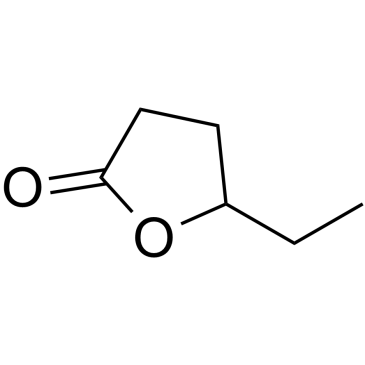Catabolic pathway of gamma-caprolactone in the biocontrol agent Rhodococcus erythropolis.
Corinne Barbey, Alexandre Crépin, Amélie Cirou, Aurélie Budin-Verneuil, Nicole Orange, Marc Feuilloley, Denis Faure, Yves Dessaux, Jean-François Burini, Xavier Latour
文献索引:J. Proteome Res. 11(1) , 206-16, (2012)
全文:HTML全文
摘要
Gamma-caprolactone (GCL) is well-known as a food flavor and has been recently described as a biostimulant molecule promoting the growth of bacteria with biocontrol activity against soft-rot pathogens. Among these biocontrol agents, Rhodococcus erythropolis, characterized by a remarkable metabolic versatility, assimilates various γ-butyrolactone molecules with a branched-aliphatic chain, such as GCL. The assimilative pathway of GCL in R. erythropolis was investigated by two-dimensional gel electrophoresis coupled to matrix-assisted laser desorption ionization (MALDI) mass spectrometry (MS) analysis. This analysis suggests the involvement of the lactonase QsdA in ring-opening, a feature confirmed by heterologous expression in Escherichia coli. According to proteome analysis, the open-chain form of GCL was degraded by β- and ω-oxidation coupled to the Krebs cycle and β-ketoadipate pathway. Ubiquity of qsdA gene among environmental R. erythropolis isolates was verified by PCR. In addition to a previous N-acyl homoserine lactone catabolic function, QsdA may therefore be involved in an intermediate degradative step of cyclic recalcitrant molecules or in synthesis of flavoring lactones.
相关化合物
| 结构式 | 名称/CAS号 | 分子式 | 全部文献 |
|---|---|---|---|
 |
丙位己内酯
CAS:695-06-7 |
C6H10O2 |
|
Predictive three-dimensional quantitative structure-activity...
2005-06-02 [J. Med. Chem. 48 , 3808-15, (2005)] |
|
Profile of volatile metabolites in human urine.
1971-07-01 [Clin. Chem. 17(7) , 592-4, (1971)] |
|
The influence of degradation characteristics of hyaluronic a...
2009-09-01 [Biomaterials 30 , 4287-96, (2009)] |
|
Structure-reactivity studies of serum paraoxonase PON1 sugge...
2005-04-26 [Biochemistry 44(16) , 6371-82, (2005)] |
|
Profiles of strongly polar and less polar acids obtained fro...
[J. Chromatogr. A. 309(1) , 17-32, (1984)] |